Disclosure: Please note that some links are affiliate links, and at no additional cost to you, we earn a commission if you make a purchase.
If you would like to support this website in some way, using these links will help do exactly that.
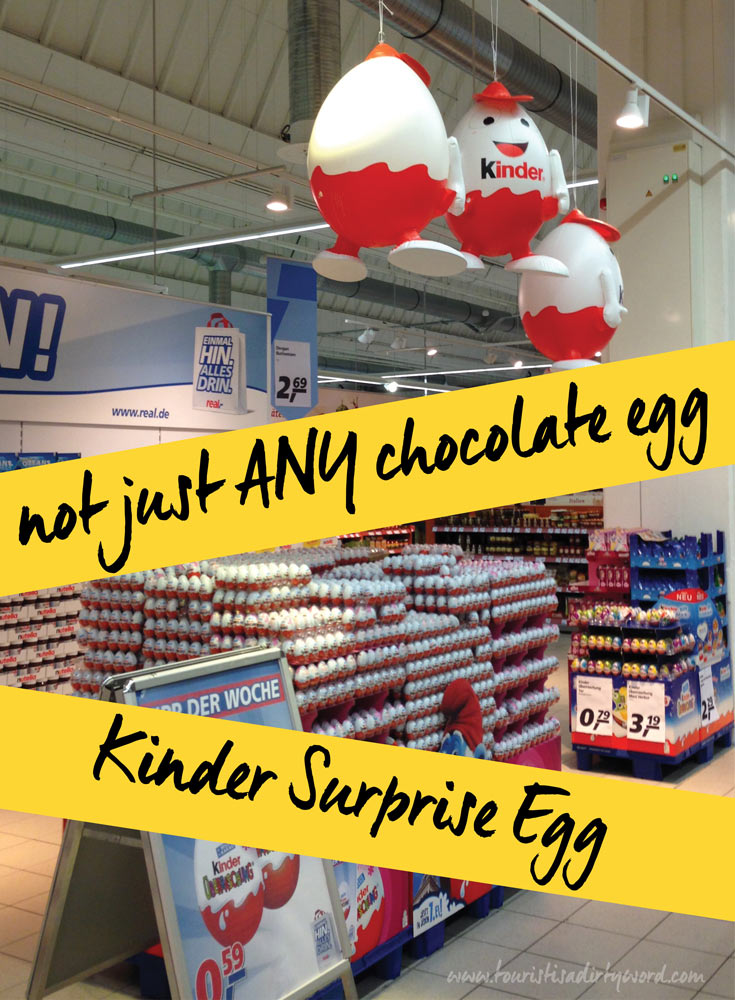
One of the favorite gifts of a German grandparent to their grandchild has to be Kinder Eggs, also known in the english-speaking parts of the world as Kinder Surprise, or Kinder Überraschung in Germany. Kids love to break apart (and eat a bit of) the chocolate egg to reveal a surprise toy hidden in a yellow plastic container. The toy variety can be a puzzle, a toy car, a Disney figurine, or a character of the Happy Hippos, who were THE hottest Kinder eggs toy in the 1990’s. My sister and I would stand in the supermarket, shaking egg after egg until we had one that did not rattle too much. Less rattle means less small pieces. We did not want to build a puzzle, we wanted a solid Happy Hippo figurine to play with!
Technically Italian
While the word Kinder means children in German, this candy was not invented in Germany. Kinder Surprise originated in 1974 in Italy as Kinder Sorpresa, produced by the Ferrero company. If the name Ferrero does not ring a bell, they are better known for their amazing hazelnut spread Nutella, or their breath mint Tic Tac here in the United States.
Why Are Kinder Eggs Illegal to Import to the USA?
Kinder Surprise eggs are legal to buy and enjoy in Germany and Europe, however, they are deemed illegal in the United States. Why is that? We have to look back all the way to 1938 when the Federal Food, Drug, and Cosmetic Act was enacted. It contains a passage stating that a “confectionery product with a non-nutritive object, partially or totally embedded within it cannot be sold within the United States, unless the FDA issues a regulation that the non-nutritive object has functional value”. This means that all candies embedded with “non-nutritive objects,” such as toys, are illegal in the United States. The main reason is that the toy inside could potentially present a choking hazard for kids.
Here's What You Should Bring Home Instead
So, the one thing you should not bring home from your German vacation is Kinder Surprise. Get caught with one of those candy eggs and you may face a fine up to $2,500 per egg. In 2010 alone, 25,000 Kinder Surprise eggs were seized in 1,700 incidents. Instead, grab the Kinder Happy Hippo Candy, which is one of our absolute favorites and fills our luggage on every trip back from Germany. Due to the popularity of the Happy Hippo figurines, Kinder created a candy around the characters. These are Denise's absolute favorite! But, even the cashier probably could figure that out.
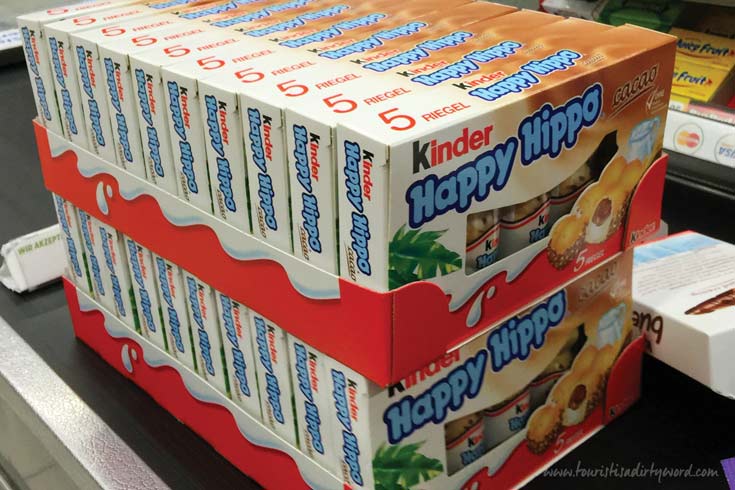
Bonus Resources
Read Are you willing to give up your rights to your Kinder Egg?
Read $2,500 Fine for a 2 euro chocolate?
See an impressive Happy Hippo Kinder Egg Toy Collection
Watch a commercial for a Kinder Surprise, to see how they're marketed
Follow Along
If you enjoyed this article, or these topics sound interesting to you, you'll love our weekly newsletter. You'll receive a free Germany Packing list for signing up, and you'll receive each week's newest posts every Friday. Thank you for reading!

Doesn’t every city have one street they want to revitalize? Here in Bradenton, city council leaders are always up to something, trying to find ways to draw more visitors and business to Main Street and to the river front. Ludwig Roselius was no different, and he had his eye on the once prosperous medieval street of Böttcherstrasse in Bremen.
It started out simple enough. The owners of the most beautiful and oldest house on the street, today’s Roselius Museum, convinced Roselius to purchase their home in 1902. Years later, he reshaped the house to his ideal image of a medieval merchant house, added the stepped gable to the roof, and opened his house to share his medieval art and antique collection with the general public in 1928.
Revitalizing Böttcherstrasse was a win-win for Roselius. He could house offices for his company Kaffee HAG in Böttcherstrasse and use the storefront windows as fantastic advertising, as well as feed into his urge to start a new cultural trend and way of thinking.
“The idea besides the advertising aspect for Kaffee HAG, in combination with the Böttcherstrasse was to start a new cultural impulse in Germany after the indignity of the 1st World War: A combination of traditional art and crafts with creative modernity. Consciously designed as a tourist attraction and as a new ideal of the 'city within a city' the Böttcherstraße should also indicate a new beginning of cultural thinking abroad. That is how the saying from Roselius "the Böttcherstrasse is an attempt to think German" should be interpreted.” Museen Böttcherstraße
Expressionism
When Ludwig Roselius was ready to revive Böttcherstrasse, Germany was reeling from losing World War I. Architecture styles were departing with distaste for the industrial revolution in their mouths. As a style, expressionism sought to be original and new, which makes the feat of gathering a list of identifying characteristic traits very challenging. It's not like gothic architecture when if you can check the proverbial boxes for several key features, you know it's a gothic building. All of expressionism characteristics are going to be general and opinion-based. Expressionism sought to distort forms for emotional effect. The building themes were still of nature: caves, mountains, rock formations.
If you Stir Together Expressionism and North German Gothic...
It quickly became a game to see which online and travel book source listed which architecture style when they referred to Böttcherstrasse. The overwhelming consensus I’ve gathered for you is ‘Mostly Expressionist’, which is honestly pretty funny. My best guess is that although Roselius wanted to create a revolutionary building ensemble, when he asked the city of Bremen’s permission he supposedly claimed he was going to do a Northern German Gothic style. Which, most of the houses on the street do fall into that silhouette with the stepped-gables, dormer windows, and pointed arcades. However, where it gets ‘Mostly Expressionist’ is the brick patterns. The buildings could be unified as a whole monolithic natural structure through using mostly brick, but through the patterns created with the bricks the designs evoke natural formations of rocks.
Cheat Sheet to the 7 Houses of Böttcherstrasse, Bremen
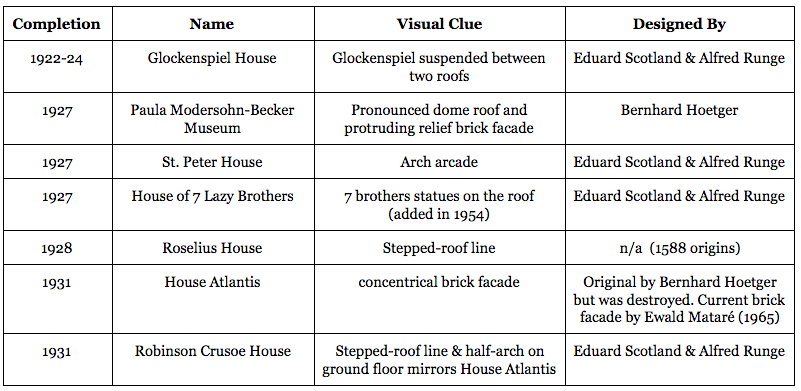
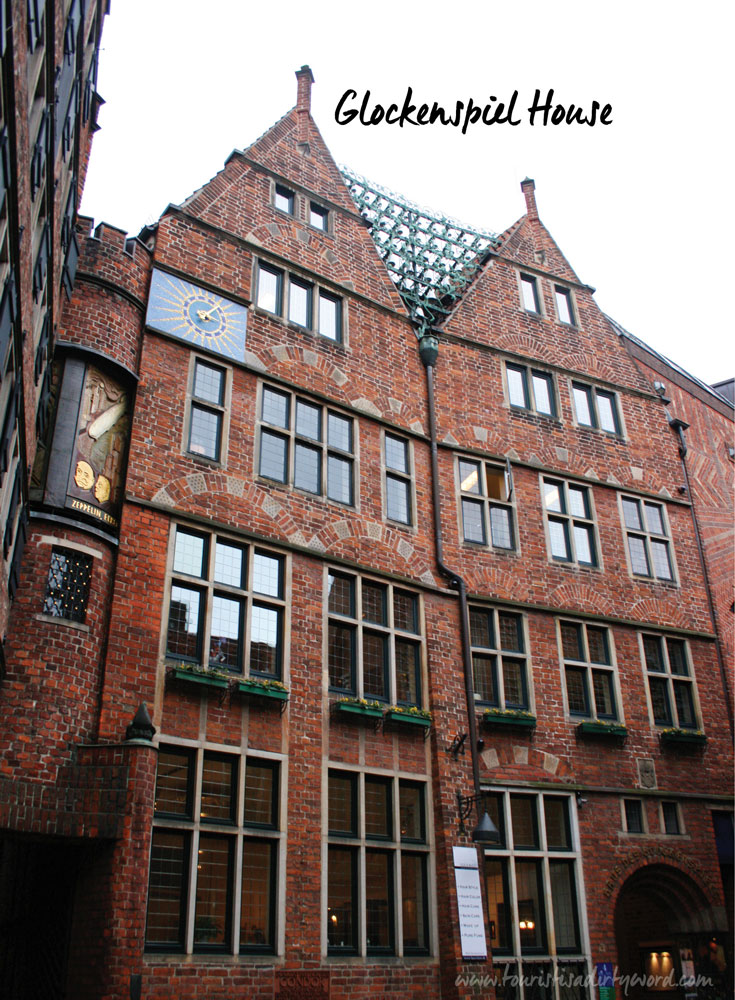
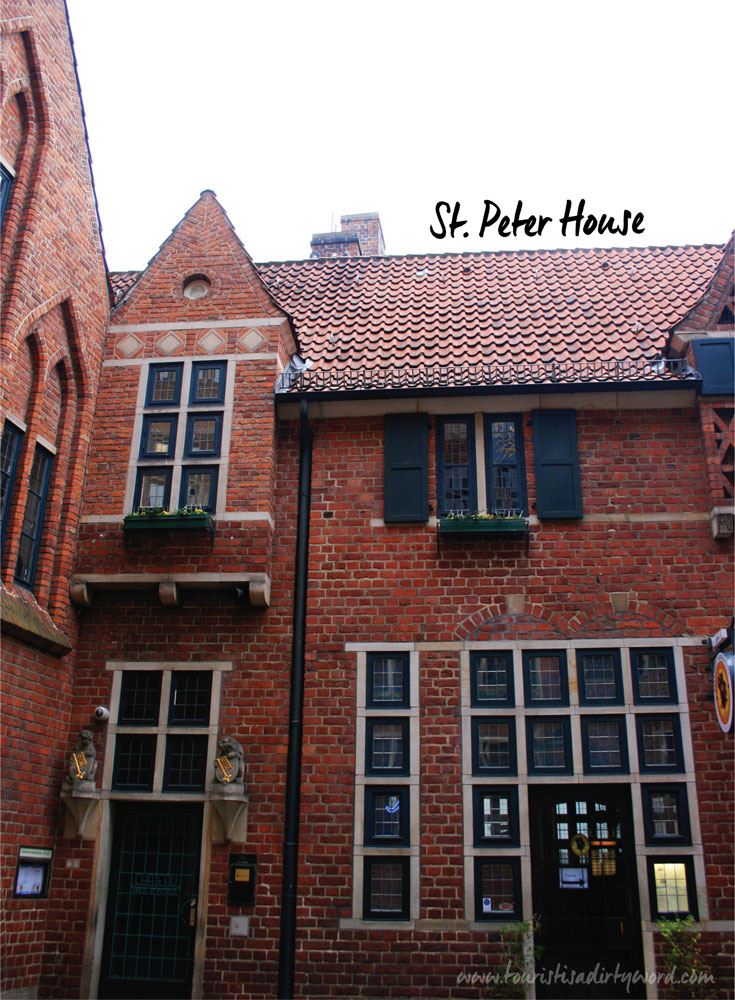
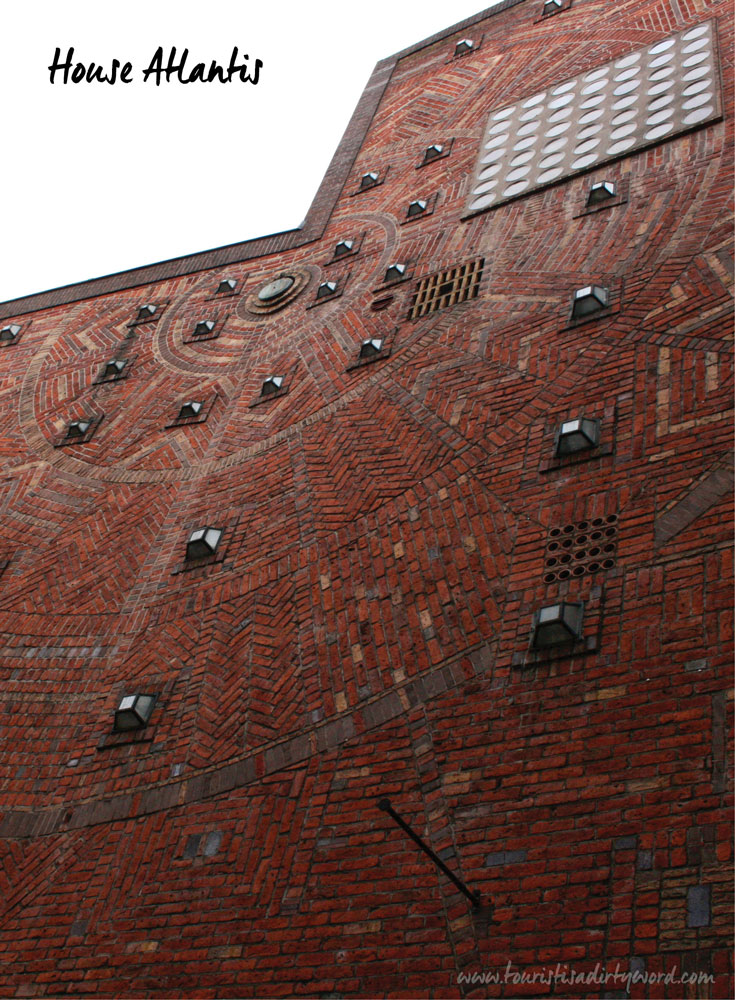
Sadly I'm missing a photo of the House of 7 Lazy Brothers. There's probably a pun in that comment. Do you have a photo of the house you'd like to share? Which one is your favorite?
Follow Along
If you enjoyed this article, or these topics sound interesting to you, you'll love our weekly newsletter. You'll receive a free Germany Packing list for signing up, and you'll receive each week's newest posts every Friday. Thank you for reading!

Denise and I had been married for several years before she realized that Kaffee und Kuchen was a German tradition. She simply thought my family had a serious coffee and cake habit, one of many reasons why she loves my family!
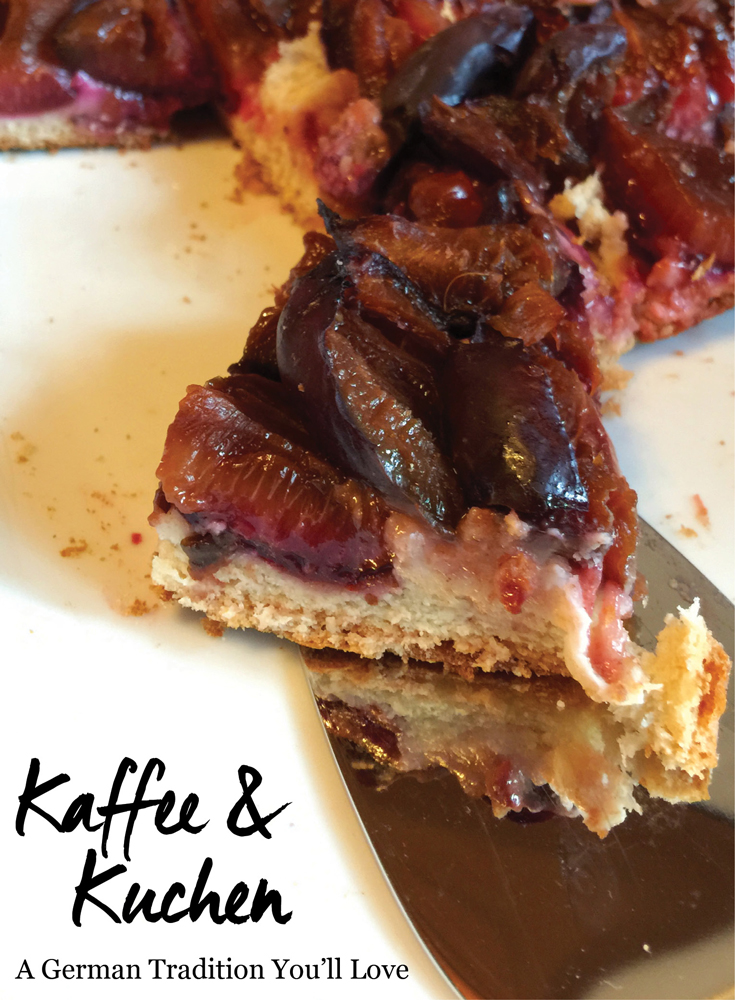
Kaffee und Kuchen, Coffee and Cake
Kaffee & Kuchen is a casual get-together in the afternoon, usually around 3:30pm, either at a coffee house or in a private home. Its as simple as it sounds, everyone eats cake, and most drink coffee or tea. Kaffee und Kuchen is also referred to as a Zwischenmahlzeit, meaning a meal between meals, comparable to the British tradition of tea time.
When is Kaffee und Kuchen?
The most common day for Kaffee und Kuchen to happen is Sunday. Most Germans are off work, sleep long, have a late breakfast and read the newspaper. After a stroll through a park or the city, in the afternoon it is time for Kaffee und Kuchen. Germans will also have coffee and cake for someone’s birthday or other family celebration.
Let's Talk Cake...
The abundance of bakeries and cafes in German cities offer many varieties of cake for people who do not want to bake and prefer to pick up a cake to share with the rest of the group. There isn’t one specific kind of cake for Kaffee und Kuchen, it can range from an elaborate decorated cake made by a bakery to a simple grocery store-bought sponge cake topped with seasonal fruit like strawberries or cherries. As a child I always looked forward to Kaffee und Kuchen, even though I never liked coffee. The different varieties of cake were right up my alley, and I would eat as much cake as I could in record time. It was a great treat for me. I was always worried one of my favorite cakes (plum pictured above or strawberry, followed by cheesecake with tangerine pieces) would be gone before I'd had a piece. Then came the hard part...
I was stuffed and happy, wanting to lay down and relax. However, this was always the part where my grandparents wanted to hear how my grades were, if I get along with my sister, or even have a girlfriend already. In between there was grown-up talk about the changing weather, upcoming holiday plans and other family members. Needless to say, this is the most boring and tiresome part of Kaffee und Kuchen, especially for a child who wants to go into the next room to watch TV or crack another high score in Tetris rather than answer an adult’s questions.
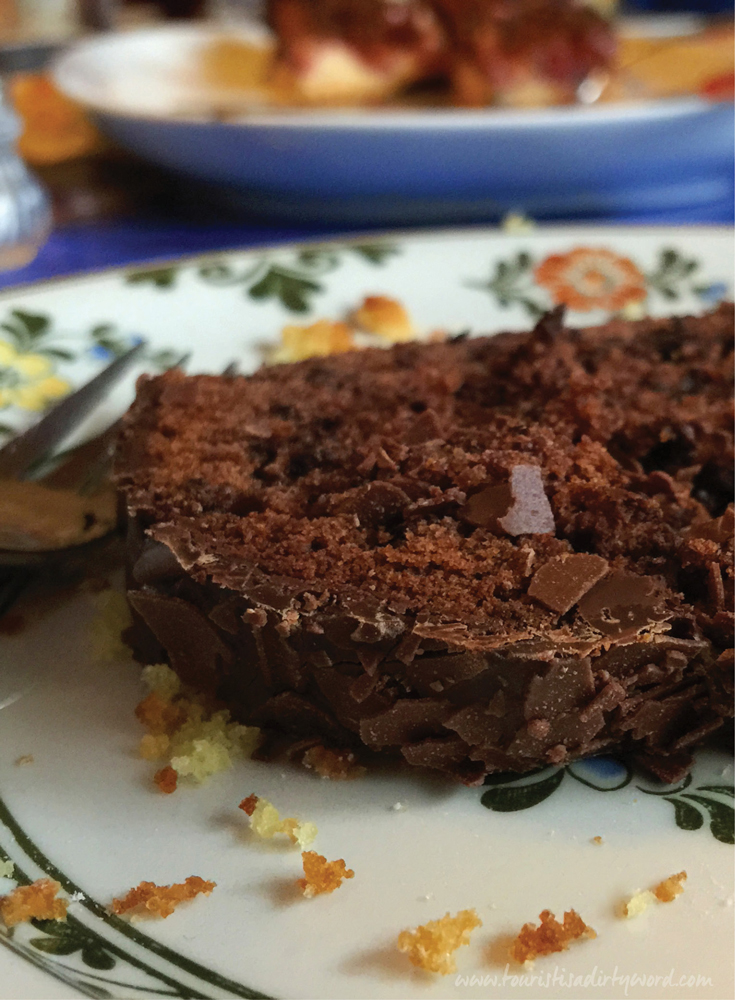
The older I become and the less I see my family during the year, the more I look forward to the first afternoon get-together when I arrive in Germany. I still prefer the cake over the coffee, but I also treasure hearing everybody's stories and adventures since the last time I have seen them. Next time you are in Germany, enjoy the chance to indulge in sweet, buttery desserts in the afternoon and spend time with family and friends in a relaxed atmosphere.
Follow Along
If you enjoyed this article, or these topics sound interesting to you, you'll love our weekly newsletter. You'll receive the newest posts each week and exclusive access to free planning resources like ‘Packing List & Tips for 2 Weeks in Germany’ and ‘Everything You Need to Rent a Car in Germany’.
Thank you for reading!

